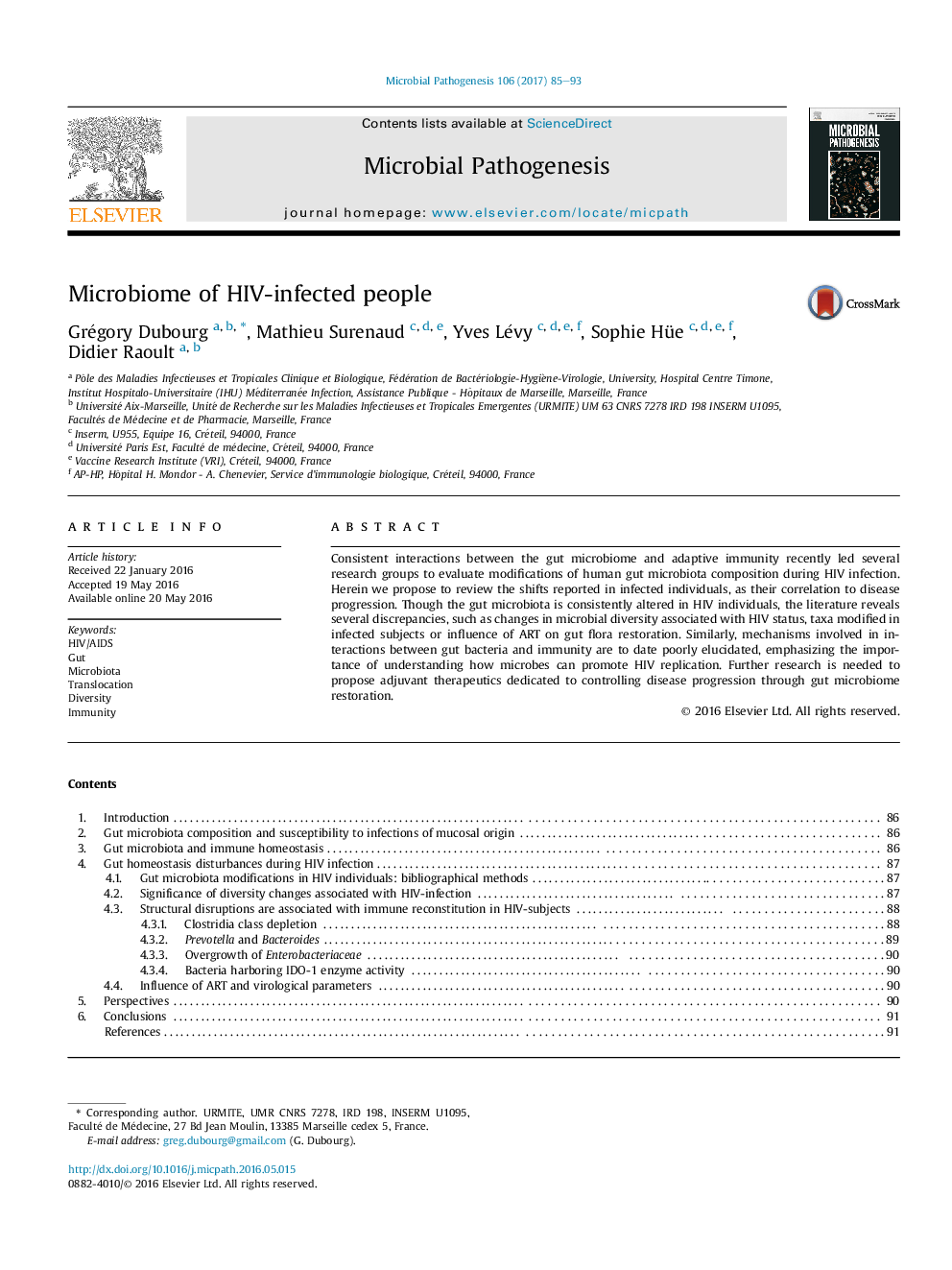| کد مقاله | کد نشریه | سال انتشار | مقاله انگلیسی | نسخه تمام متن |
|---|---|---|---|---|
| 5674071 | 1593683 | 2017 | 9 صفحه PDF | دانلود رایگان |
کلمات کلیدی
1.مقدمه
2. ترکیب و حساسیت ریزاندامگان همزیست روده به عفونتهای منشاء مخاطی
2.1تجزیه و تحلیل ریزاندامگان هم زیست روده
3. ریزاندامگان همزیست روده و هوموستازی ایمنی
4. اختلال هموستازی روده در بیماری HIV
4.1 تغییرات ریزاندامگان همزیست روده در افراد مبتلا به HIV: روشهای کتابشناسی
4.2 اهمیت تغییرات تنوع در ارتباط با عفونت HIV
شکل 1: مشخصات 7 مطالعه با استفاده از تکنیک های ترتیب دهی با بازدهی بالا برای ریزاندامگان هم زیست مخاطی در بیماران مبتلا به ایدز
4.3. اختلالات ساختاری وابسته به بازسازی ایمنی در افراد مبتلا به HIV
4.3.1 نقص کلاس Clostridia
شکل 2:قطع ایمنی به علت انتقال ریزاندامگان زیستی روده در افراد مبیلا به ایدز
4.3.2 Prevotella و Bacteroides
4-3-3 رشد بی رویه آنتروباکتریاسه*
4-3-4 باکتری ها با فعالیت آنزیم IDO1
4-4- تاثیر ART و پارامتر های ویروس شناسی
5.دیدگاه ها
6. نتایج
Consistent interactions between the gut microbiome and adaptive immunity recently led several research groups to evaluate modifications of human gut microbiota composition during HIV infection. Herein we propose to review the shifts reported in infected individuals, as their correlation to disease progression. Though the gut microbiota is consistently altered in HIV individuals, the literature reveals several discrepancies, such as changes in microbial diversity associated with HIV status, taxa modified in infected subjects or influence of ART on gut flora restoration. Similarly, mechanisms involved in interactions between gut bacteria and immunity are to date poorly elucidated, emphasizing the importance of understanding how microbes can promote HIV replication. Further research is needed to propose adjuvant therapeutics dedicated to controlling disease progression through gut microbiome restoration.
Journal: Microbial Pathogenesis - Volume 106, May 2017, Pages 85-93
